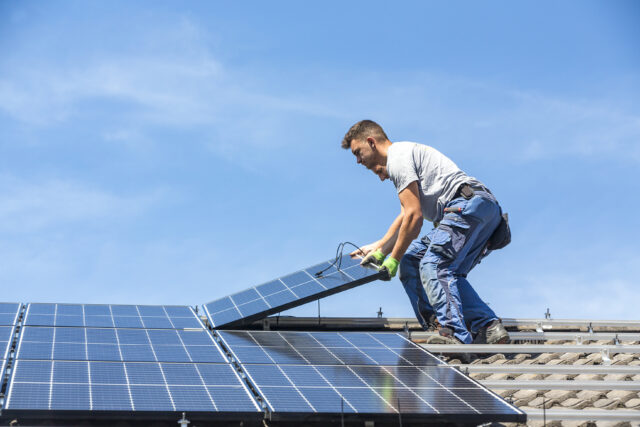Solar panels have undergone remarkable advancements in recent years, making them increasingly more efficient and appealing as a renewable energy source.
As the world grapples with the challenges of climate change and the need for sustainable energy solutions, the continuous improvement in solar panel efficiency is a promising development.
This article explores the key factors driving the enhanced efficiency of solar panels and their potential to revolutionize the energy landscape.
Table of Contents
Technological Innovations
One of the primary drivers behind the increasing efficiency of solar panels is technological innovation. Scientists and engineers have been tirelessly working to develop new materials, manufacturing processes, and designs that can capture and convert sunlight into electricity more effectively. One of the groundbreaking innovations in this regard is the use of perovskite solar cells.
Perovskite solar cells are a relatively new addition to the solar industry, but they have shown great promise. These cells offer higher efficiency compared to traditional silicon-based solar cells. Researchers have been able to achieve significant improvements in perovskite solar cell efficiency by optimizing their composition and fabrication methods.
Additionally, advancements in nanotechnology have allowed for the creation of solar panels with nanostructured materials. These materials can trap and convert more sunlight, leading to higher energy yields. By integrating these nanomaterials into solar panels, efficiency gains have been substantial.
Improved Manufacturing Techniques
Manufacturing techniques have also played a vital role in enhancing solar panel efficiency. Mass production and economies of scale have made solar panels more affordable and accessible. This has led to increased research and development investment, which in turn has accelerated improvements in efficiency.
In recent years, the development of more efficient and cost-effective manufacturing processes, such as roll-to-roll printing and inkjet printing, has allowed for the production of thinner and lighter solar panels. Thin-film solar technology, for example, is gaining popularity due to its potential for higher efficiency and reduced material consumption.
Better Energy Storage Solutions
Efficiency gains in solar panels are not limited to just their ability to capture and convert sunlight. Energy storage technologies, like advanced batteries, have also seen substantial improvements. These batteries can store excess solar energy generated during the day for use during nighttime or cloudy days.
As energy storage solutions become more efficient and affordable, the overall efficiency of solar energy systems increases. Homeowners and businesses can maximize their solar energy usage, reducing their dependence on the grid and further incentivizing the adoption of solar panels.
Increased Energy Conversion Efficiency
Energy conversion efficiency is a key metric in assessing the performance of solar panels. It measures how effectively a solar panel converts sunlight into electricity. Traditional silicon-based solar panels have seen their efficiency steadily increase over the years. However, other types of solar cells, such as multi-junction and tandem solar cells, have pushed the boundaries of efficiency even further.
Multi-junction and tandem solar cells consist of multiple layers that can capture a broader spectrum of sunlight, increasing the overall efficiency of energy conversion. This technology has primarily been used in space applications but is gradually making its way into terrestrial solar panel production.
Improved Durability and Longevity
Efficiency improvements are not only about boosting initial performance but also about ensuring that solar panels maintain their efficiency over time. Advances in materials science have led to more durable and longer-lasting solar panels.
Manufacturers have developed protective coatings and materials that can withstand harsh weather conditions, including extreme temperatures, humidity, and UV radiation. As a result, solar panels can continue to produce electricity efficiently for decades, providing a solid return on investment for homeowners and businesses.
The increasing efficiency of solar panels is a testament to human ingenuity and the urgent need for sustainable energy solutions. Technological innovations, improved manufacturing techniques, better energy storage options, increased energy conversion efficiency, and enhanced durability have all contributed to this remarkable progress.








